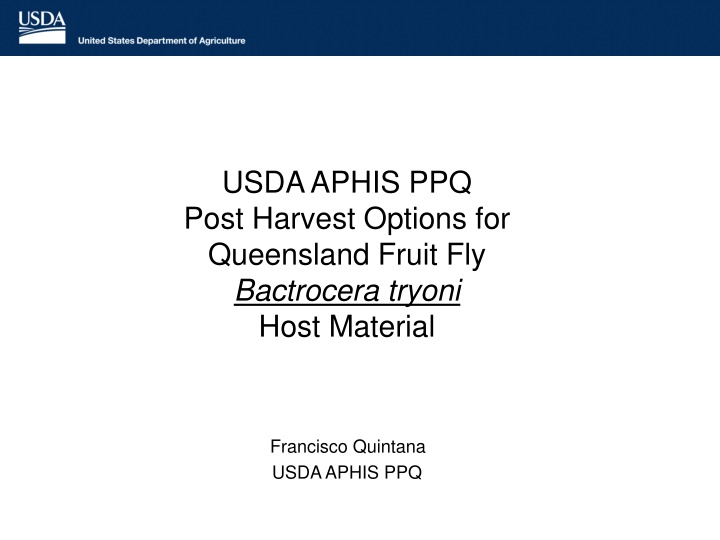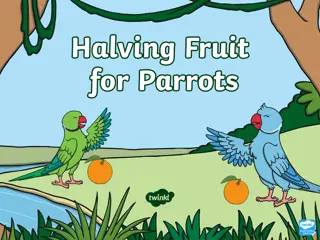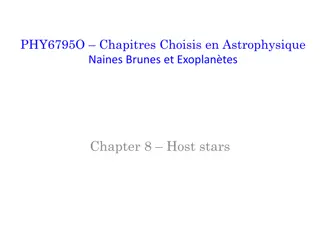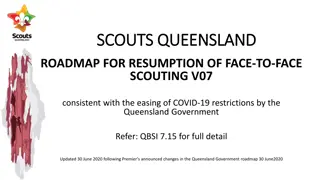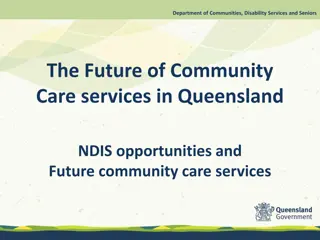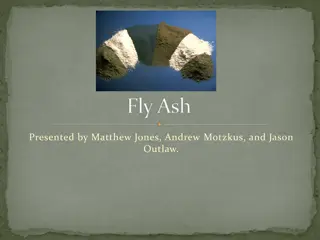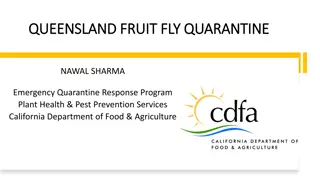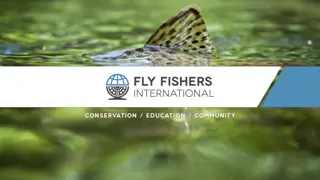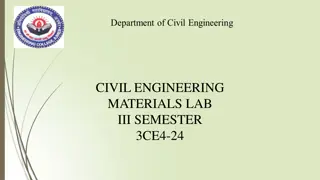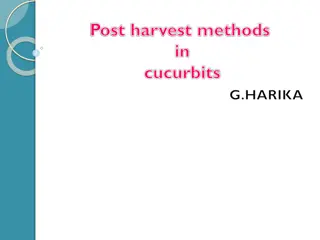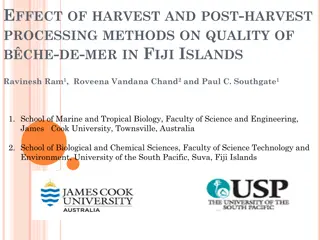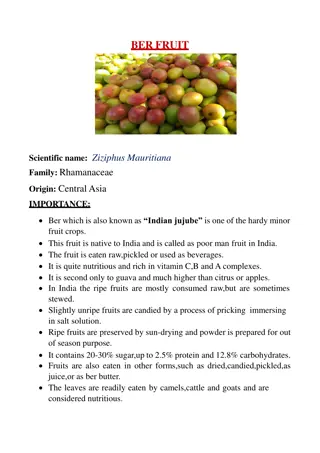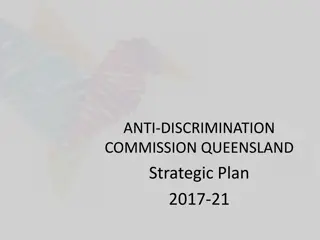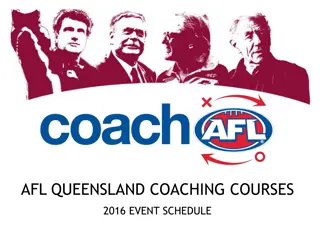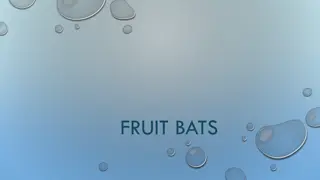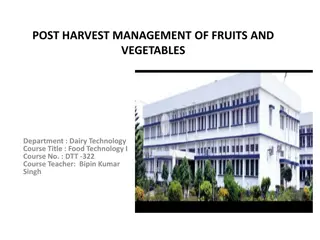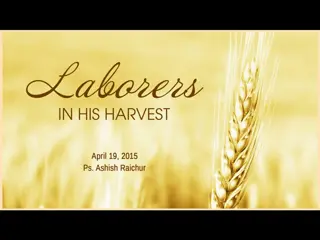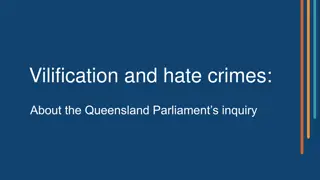Post-Harvest Options for Queensland Fruit Fly Bactrocera tryoni Host Material
Explore the diverse post-harvest treatment options available for managing Queensland Fruit Fly Bactrocera tryoni on various host materials. From bait treatments to cold treatment and juicing, discover the challenges, limitations, and suitability factors impacting the treatment cycles. Additionally, learn about the significance and requirements of each treatment type to ensure compliance with regulatory standards.
Download Presentation

Please find below an Image/Link to download the presentation.
The content on the website is provided AS IS for your information and personal use only. It may not be sold, licensed, or shared on other websites without obtaining consent from the author.If you encounter any issues during the download, it is possible that the publisher has removed the file from their server.
You are allowed to download the files provided on this website for personal or commercial use, subject to the condition that they are used lawfully. All files are the property of their respective owners.
The content on the website is provided AS IS for your information and personal use only. It may not be sold, licensed, or shared on other websites without obtaining consent from the author.
E N D
Presentation Transcript
USDA APHIS PPQ Post Harvest Options for Queensland Fruit Fly Bactrocera tryoni Host Material Francisco Quintana USDA APHIS PPQ
Post-harvest Treatment Option Suitability When is too late to start a bait treatment cycle and finish it in the minimum required timeframe (Required number treatments during current harvest schedule) When inside the regulatory core (within 0.5 mile of find site) and pre-harvest bait treatment is not an option
Post harvest options available for fresh commercial host material depend on the crop itself. T108-a: Apple, Apricot, Avocado, Cherry, Grape, Kiwi, Nectarine, Peach, Pear, Plum, Quince T108-b: Apple, Grape, and Pear Methyl Bromide Fumigation PLUS Cold Treatment
Challenges and Limitations of MB fumigations: Limited fumigation providers (San Diego + Los Angeles) Complicated logistics (transport to fumigation facilities, etc.) Receiving county permission may be required to receive untreated material MB may injure or reduce shelf life for some commodities depending on the temperature and dosage High Cost Currently looking at locations that can be approved by USDA to provide cold treatment
Cold Treatment ONLY options T107-d: Apple, Citrus, Kiwi, Pear Looking into additional other options for citrus and other crops...
Other post-harvest options Juicing Juicer must have a project issued compliance agreement and must comply with safeguarding, cleaning, and host material disposal regulations to receive this material Host material can move safeguarded to an approved juicing facility under project issued Limited Permit Up to the receiver to determine if they would accept the material or not project can not force any single company to accept material for juicing/processing
Other post-harvest options Irradiation - Treatment: T105-a 1 IR at 100 Gy No irradiation facilities available in CA currently Approved processing methods may include: Cooking/Baking Freezing Canning Crushing/Grinding Completely Drying or dehydrating Grounding up or Liquefying Fresh host fruits and vegetables may not move from any property in the quarantine area unless they have been processed in a manner that eliminates the risk of spreading any life stages of fruit flies.
Check first with Project staff to determine if a particular method of fruit or vegetables processing complies the quarantine restrictions. Every situation could be different, please consult the Project before taking any significant actions. Thank you.
